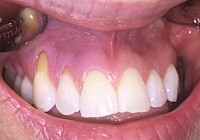
These environmental toxins are everywhere – and they are affecting boys' puberty
Chemicals we ingest through food and drink accumulate in our bodies, and a new study suggests this could influence boys’ puberty.
These substances are often referred to as forever chemicals.
Once they have entered the environment and our bodies, they remain there for a long time.
They are used in clothing, cosmetics, and food packaging. We all ingest them through food and drinking water.
Since PFAS chemicals are found almost everywhere, virtually all humans have traces of them in their blood, according to Britannica.
Some PFAS are already banned, and Norway is among the countries pushing for a full ban in the EU.
However, these chemicals won’t simply disappear with a ban.
Effects on health
Studies have shown that PFAS chemicals – of which there are many variants – affect our health. They disrupt the immune system and can reduce the effectiveness of vaccines. Some are classified as carcinogenic, and they can impair foetal development.
Other studies indicate a connection between PFAS and disruptions in puberty. The theory is that PFAS, like some other chemicals, may interfere with hormone balance, and in turn, affect puberty.
Earlier this year, sciencenorway.no wrote about a study that found girls with high levels of PFAS in their bodies got their periods earlier.
A new Norwegian study now finds the opposite effect in boys: Those with high levels of PFAS in their blood entered puberty later.
Puberty, PFAS, and boys
“There’s little research on PFAS and puberty, especially in boys,” says Ingvild Halsør Forthun, one of the researchers behind the study.
Much of the existing research is based on self-reported data. The study participants themselves have reported how far along they are in puberty. For girls, this typically involves recalling when they first got their period. For boys, it is more difficult to pinpoint.
In this new study, researchers determined the children’s stage of puberty. They measured hormone levels in the blood, mapped pubic hair development, and used ultrasound to measure breast development in girls and testicular development in boys.
This is one of the strengths of the study, according to Forthun, who works at the University of Bergen’s Department of Clinical Science.
The data, collected in 2016, comes from the Growth Study in Bergen 2, which aimed to map the puberty of Norwegian children and see what might affect it.
Smaller testicular volume
Forthun's role was to examine whether PFAS levels in the blood were linked to puberty development.
In boys, puberty begins when the testicles reach a certain size and testosterone levels in the blood hit a specific threshold. This typically happens between the ages of 9 and 14.
Researchers focused on boys within this normal range and analysed whether PFAS levels affected the timing of puberty onset.
In one analysis, the 228 boys were divided into three groups – those with the most PFAS, those with the least PFAS, and those in between.
When comparing boys with the lowest and highest PFAS levels, the researchers found a clear pattern: Boys with high levels of PFAS entered puberty about 10 months later than those with the lowest PFAS levels.
“This pattern was evident across several indicators. Boys with higher PFAS levels had smaller testicular volumes, lower testosterone levels, and delayed pubic hair growth” says Forthun.
Previous animal studies have also found a link between PFAS and delayed sexual maturation.
Not a cause-effect relationship
This study is what researchers call a cross-sectional study. It provides a snapshot of samples collected from a group of boys in 2016. The boys were not followed over time.
“We can’t definitively say that PFAS is the cause of the delayed puberty in these boys,” says Forthun. “But we do see a clear connection.”
The finding supports the theory that PFAS can disrupt puberty development, and that it is undesirable to have high levels of PFAS in the body, according to Forthun.
Unusually strong data
Birgitte Lindeman, an expert on the effects of chemicals on the human body, is a researcher at the Norwegian Institute of Public Health’s Department of Chemical Toxicology.
Lindeman considers the new puberty study to be well-conducted and thorough.
“What’s particularly good is the quality of the puberty development measures. It’s rare to have such high-quality data,” she says. “However, more studies are needed to establish the causes behind these findings.”
Lindeman points out that diet is a significant source of PFAS, and dietary differences may also influence puberty development.
In some studies, researchers have found a link between PFAS and early puberty, while in others, they fhave found delayed puberty. The research is not entirely consistent, according to Lindeman.
“But it’s possible that PFAS affects girls and boys differently,” she says.
Not a strong enough connection yet
Lindeman was involved in writing the health assessment of PFAS included in the proposal to ban all PFAS substances in the EU.
“The data on PFAS’ effects on our immune system is reasonably strong. However, the data on its effects on puberty at the levels humans are exposed to is not clear,” she says. “But it’s a problem that we’re all exposed to these chemicals, and it’s something that needs to be addressed.”
Some PFAS are already banned, and others are under review.
“Many of the PFAS chemicals found in people's blood today are strictly regulated, but exposure continues because they’re so extremely stable in the environment,” says Lindeman.
“There are thousands of different PFAS chemicals. If one is banned, it’s not ideal for it be replaced by another. That’s why a near-total ban has been proposed,” she concludes.
———
Translated by Alette Bjordal Gjellesvik
Read the Norwegian version of this article on forskning.no
Reference:
Forthun et al. Exposure to Per- and Polyfluoroalkyl Substances and Timing of Puberty in Norwegian Boys: Data from the Bergen Growth Study 2. Environmental Science & Technology, 2024. DOI: 10.1021/acs.est.4c06062




































